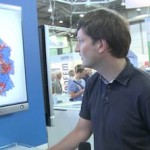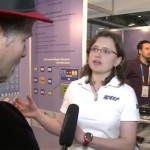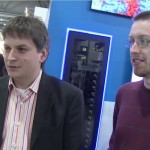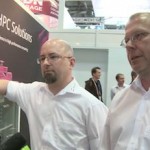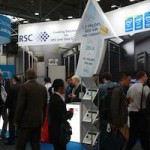In this video from ISC’14, Christian Blau from the Max Planck Institute and Greg Johnson from Intel describe their demonstration of Computational Biology using Intel Xeon and Intel Xeon Phi.
Univa Grid Engine Boosts HPC Utilization at ISC’14
In this video from ISC’14, David Brooks from Univa discusses how the workload and resource management software layer can drastically improve ROI by boosting utilization as well as productivity. At the conference, Univa announced a collaboration with German IT service provider CPU 24/7 as well as certified integration with Schlumberger’s ECLIPSE reservoir simulation software.
Allinea Programming Tools for Energy Optimization
In this video from ISC’14, David Lecomber discusses new energy optimization programming tools from Allinea Software. “Our developer-centric tool, Allinea MAP, will allow scientific code developers to focus energy optimization down into the source code — making changes to the application to drive faster performance and lower energy consumption at the same time.”
Gauss Centre Demonstrates Continued Leadership in TOP500
With the release of the latest TOP500 list last week, the Gauss Centre for Supercomputing (GCS) reports continued leadership in high performance computing in Europe.
Video: DEEP and DEEP-ER Project Updates at ISC’14
In this video from ISC’14, the DEEP and DEEP-ER Project teams describe their prototype hardware and software. “The DEEP consortium will develop a novel, Exascale-enabling supercomputing architecture with a matching SW stack and a set of optimized grand-challenge simulation applications. DEEP takes the concept of compute acceleration to a new level: instead of adding accelerator cards to Cluster nodes, an accelerator Cluster, called Booster, will complement a conventional HPC system and increase its compute performance.”
Video: PRACE Award Winners – Sustained Petascale Seismic Simulations
In this video from ISC’14, Alex Heinecke from Intel and Sebastian Rettenberger from the Technical University of Munich describe their award-winning paper on volcano simulation. “Seismic simulations in realistic 3D Earth models require peta- or even exascale compute power to capture small-scale features of high relevance for scientific and industrial applications. In this paper, we present optimizations of SeisSol — a seismic wave propagation solver based on the Arbitrary high-order accurate DERivative (ADER) Discontinuous Galerkin method on fully adaptive, unstructured tetrahedral meshes — to run simulations under production conditions at petascale performance.”
Remote Viz in the Cloud: NICE DCV Test Drive now available on AWS
The NICE Software group has announced the availability of a new AWS Test Drive for NICE Desktop Cloud Visualization (DCV).
Video: Transtec Remote Visualization
“Instead of mass workstation upgrades, Remote Visualization allows incremental provisioning, on-demand allocation, better management and efficient distribution of interactive sessions and licenses. Racked workstations or blades typically have lower maintenance, cooling, replacement costs, and they can extend workstation (or laptop) life as “thin clients”.
RSC Announces Record Compute Density with Xeon Phi at ISC’14
Russian supercomputing vendor RSC Group announced world record compute and power density with their RSC PetaStream and RSC Tornado based clusters.
Video: Applications Performance Optimizations – Best Practices
“To achieve good scalability performance on the HPC scientific applications typically involves good understanding of the workload through performing profile analysis, and comparing behaviors of using different hardware which pinpoint bottlenecks in different areas of the HPC cluster. In this session, a selection of HPC applications will be shown to demonstrate various methods of profiling and analysis to determine the bottleneck, and the effectiveness of the tuning to improve on the application performance.”

